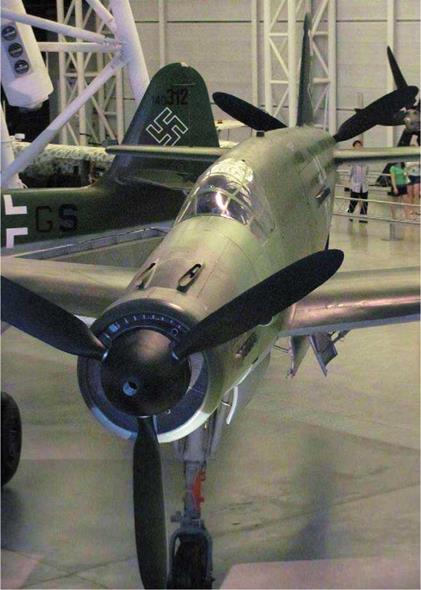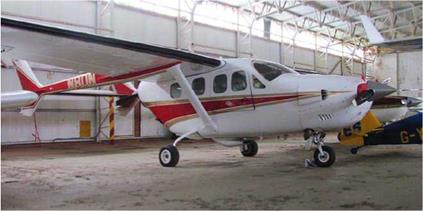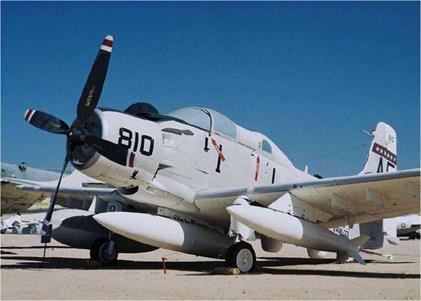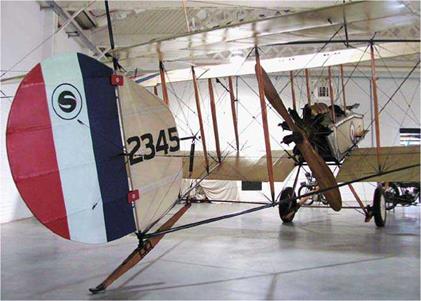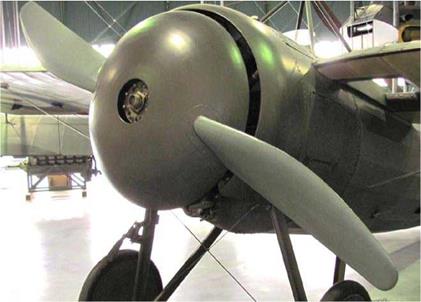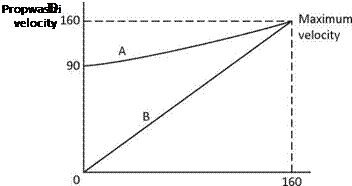Throughout this book we have followed along the lines of the ‘blade element theory’. At this point we diverge briefly to consider the ‘Rankine-Froude axial momentum theory’; this theory gives a clearer explanation of the energy change in the propeller’s propwash.
The marine engineer, R. E. Froude (1846-1924), introduced the idea of the prop disc, which became known as Froude’s Actuator Disc where the air mass on passing through the prop disc experiences a sudden rise in pressure without affecting the increasing the propwash velocity. The axial momentum theory assumes the prop thrust to be evenly distributed through the propeller disc, which just isn’t true. In fact the thrust varies from zero at the hub to a maximum at the 0.75 radius station and reduces again to zero at the prop tips. It must also be realised no propeller achieves the efficiency an actuator disc implies. This fact will be disregarded for the present time and it will be assumed the thrust to be evenly distributed across the prop disc, while discussing the axial momentum theory.
As the propeller rotates under normal operating conditions, it sucks air from in front of the prop disc causing a low pressure area. The air mass, known as the ‘inflow velocity’ (V1) accelerates through the prop disc into an area of increasing velocity behind the prop and experiences a rapid rise in pressure as it does so. It is the difference in pressure between the front and rear of the prop disc, caused by the change in the air mass momentum that produces thrust. The air mass now called the ‘outflow velocity’ (Vo) continues to accelerate reaching its maximum velocity some distance behind the propeller. The final maximum velocity is equal to the aircraft’s rue air speed plus double the propwash velocity (aircraft speed + 2V). It should now be obvious from the above, half of the propwash velocity increase occurs in front of the prop while the other half of the speed increase occurs behind the propeller As the speed of the propwash increases to its maximum value, the propwash also contracts to a smaller diameter than the prop disc itself, in compliance with Bernoulli’s Theorem. The point of constriction is known as the ‘Vena Contracta’. The air mass flowing through the prop disc should be considered as a three-dimensional stream tube.
The propwash velocity/aircraft velocity ratio (v/V) is known as the ‘inflow factor’ (a), which increases with an increase of propwash velocity. Propeller efficiency will be greatest when the propwash velocity is close to the aircraft’s true air speed (V), that is, the greatest efficiency is achieved at a small value of v/V. When the propwash velocity equals the aircraft velocity, the value of the inflow factor (a) is equal to one. At other speeds, where the propwash velocity is less than the aircraft’s velocity (which is the usual case) the value of the inflow factor will be less than one, which ties in with the ‘ideal efficiency’ of
the prop, where the thrust is related to aircraft’s speed and the inflow factor. The ideal efficiency, or Froude’s Efficiency, can be calculated from the formula known as the Froude’s Equation:
T x V
Ideal efficiency =
T x (V + v)
Where T = thrust factor
V = aircraft velocity v = propwash velocity
The propwash velocity (curve A) is plotted against the aircraft’s true air speed (curve B) in Diagram 15, Propwash Velocity v. KTAS. This shows the static prop thrust to be 90 knots at full throttle while the aircraft is stationary. As the aircraft accelerates, the propwash will also accelerate but not as quickly, until a point is reached where the aircraft’s velocity and propwash velocity coincide. This occurs at the maximum level flight speed of the aircraft. Stated simply, the thrust equals the mass of the air multiplied by the propwash velocity minus the aircraft velocity.
It was stated earlier, “It is the difference in air pressure between the front and rear of the prop disc that produces thrust”. However, this is only part of the story. As the aircraft travels forward, the air mass well ahead of the prop disc is assumed to be stationary; on approaching the prop disc and passing through it, the air mass accelerates and gains momentum. Thrust is a result of this change in momentum and the greater the change, the greater the thrust. Momentum is the product of mass multiplied by velocity (MV). A large mass of air flowing at a small velocity can produce the same amount of thrust as a small mass of air flowing at a high velocity. The former is the better of the two options because it requires less work to produce the same amount of prop thrust. The following can show this. The propwash gains kinetic energy (%MV2) due to the increase in momentum (MV) as it passes through the prop disc. The kinetic energy represents the work done by the prop in accelerating the air mass from zero velocity. The kinetic energy of ‘M’ slugs moving at a velocity of V feet/second is equal to %MV2 ft. lb. It can be seen the same thrust and momentum can be achieved from either one slug given 10 ft/second acceleration or, ten slugs an acceleration of one feet/second. Using the above formula (%MV2) it is shown:
1 . One slug given 10 ft/sec = % x 1 x 102 = 50 ft. lbs
2 . Ten slugs given 1 ft/sec = % x 10 x 12 = 5 ft. lbs.
Alternately, the metric formula can be used using kilojoules where:
M = mass, kilograms (kg)
V = velocity, metres/second (m/s).
Therefore, the second line (2) is more efficient because it wastes less energy and produces the same momentum by accelerating a large mass of air at a low velocity. From this result it is proven a large propeller is more efficient at the relatively lower aircraft speeds than a jet engine, which accelerates a relatively small volume of air at a much higher velocity. The reverse becomes true at higher aircraft speeds where the jet engine has superior efficiency, due to other factors not related to propellers. [See Diagram 11, Propulsive Efficiency v. True Air Speed].
The static prop thrust produced when the aircraft is stationary can be calculated from the following formula:
Static prop thrust = PDA x V1 x p x Vo The cruise thrust can be calculated from a similar formula:
Cruise thrust = PDA x (V + V1) x p x Vo
Where PDA = prop disc area, sq. ft (or sq. m)
V = aircraft velocity, FPS (or M/s)
V1 = inflow velocity, FPS (or M/s)
Vo = outflow velocity, FPS (or M/s) p = air density, slugs/cu. ft (or kg/m3)
Note, when using Imperial units the answer is in pounds of thrust and for SI units the answer is in Kilogram force. The difference in the formulas between the static prop thrust and cruise thrust is the addition of the aircraft velocity (V) in the cruise formula. When referring to the propwash velocity, unless otherwise stated the velocity in the axial direction only is considered. The helical velocity (or race rotation) as it is known, is ignored
The location of the propeller on the aircraft is an important consideration for the aircraft designer If it is placed too close to the airframe or engine nacelle, thrust and efficiency can be reduced and also, the propwash velocity will reduce and its pressure will rise. This fact becomes relevant when debating the advantages and disadvantages between pusher and tractor propellers: some people claim pushers have greater efficiency. But do they? The air mass flowing through the prop disc is accelerating causing a pressure differential, by lowering the pressure in front of the prop and raising it behind, as mentioned previously. The propwash from a single-engine tractor prop flows over the entire fuselage increasing the parasite drag in proportion to the greater pressure gradient created by the propeller. This can amount to a 5% increase of fuselage drag equating to prop efficiency about 4% lower than a pusher prop, thus favouring a pusher as being slightly more efficient. If the prop is now placed at the far end of the fuselage as a pusher, the 5% increase in parasite drag mentioned above, is now cancelled. However, it is not all good news! The decrease of air pressure in front of the pusher prop’s disc has the effect of lowering the pressure gradient on the aft portion of the fuselage resulting in an increase of drag in that area. This is equivalent to a loss in prop thrust of about 5% and a loss in propeller efficiency of 2-3%. The net result is, tractor and pusher props come out about even as far as efficiency is concerned.
What has been said above regards fuselage mounted tractor and pusher props, also applies to wing mounted engines on multi-engine aircraft. The engine cowling causes a disturbance to the passing propwash, which reacts back on the propeller as interference, which reducing the prop’s apparent pitch and efficiency. Pusher props are affected by the reduced propwash velocity and interference caused by the engine cowling in front of the prop. The reduced propwash mainly affects the inner portion of the propeller blades, leaving the outer portion unaffected as it operates at a higher rate of advance than the inner portions of the blades.
With the exception of the above paragraph, it has been assumed the propeller to be ‘free standing’, and unaffected by the presence of the fuselage or engine nacelle behind the prop: the thrust is then referred to as ‘free thrust’. However, if we take into consideration the presence of the fuselage or nacelle and its affect on the propeller propwash, we then refer to the disturbed propwash as ‘apparent’ or ‘gross thrust’. Going one step further, if the drag is subtracted from the gross thrust (caused by the propwash flowing over the fuselage or nacelle) the term is ‘propulsive’ or ‘net thrust’. Propulsive thrust is always a constant fraction less than the apparent thrust due to the drag being proportional to the ‘propwash velocity squared’. That is the theory according to R. E. Froude… we now resume with the blade element theory.
One advantage a propeller has over a jet engine is the addition of the propwash flowing over the parts of the wing and empennage (tailplane). The total lift produced by the wings is influenced by the total slipstream over the whole aircraft plus the wing lift enclosed within the propwash. The total amount of lift can be varied within limits, by variation in engine power settings and thus changes in propwash thrust with the aircraft at constant speed. [The jet aircraft must increase air speed to increase lift, and due to the aircraft’s inertia, this takes time]. Variations in propwash and wing lift can be used to advantage during the approach to land when the aircraft may experience a rapid sink. An increase in engine power will increase the propwash-flow over the wing lift and thus, increase lift to stop the sink. With power on, another advantage is the additional lift that lowers the stalling speed by 5-10 knots, depending on the aircraft type











